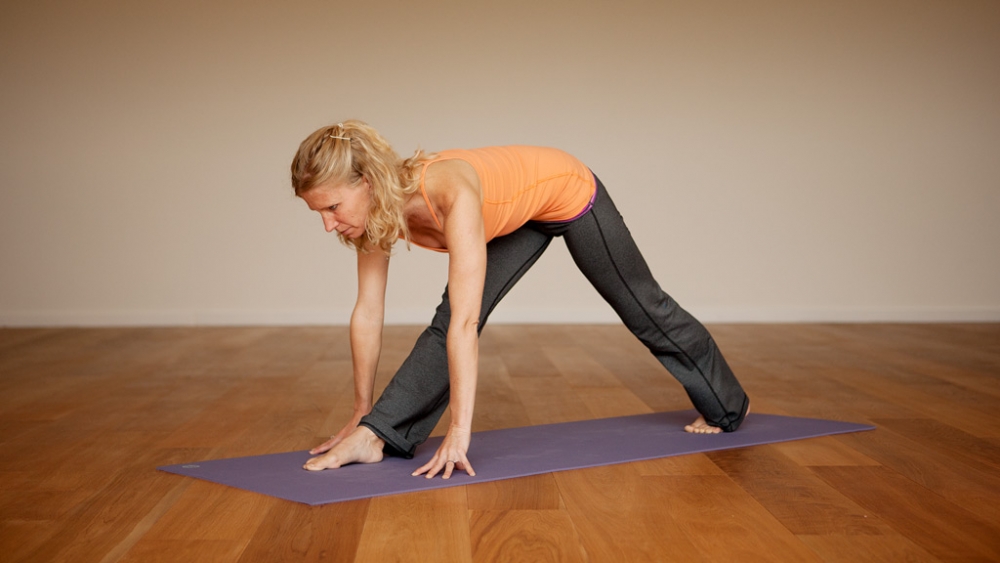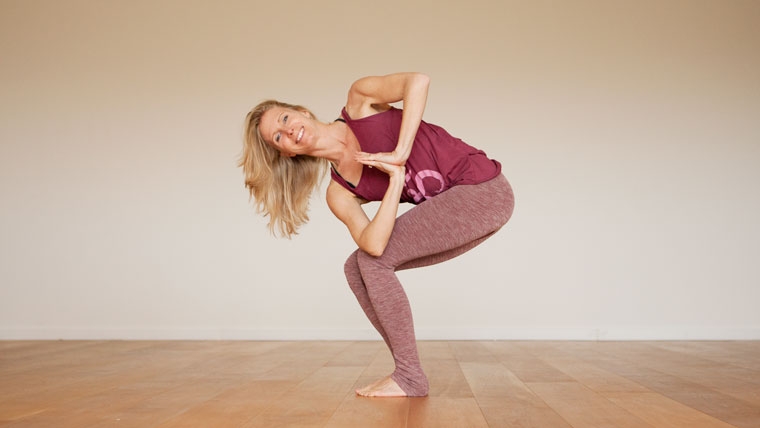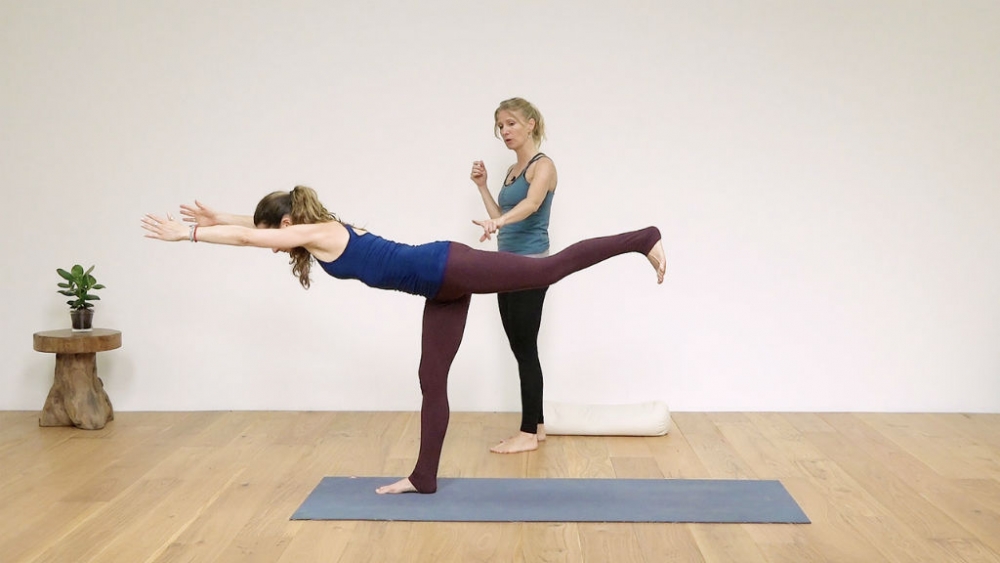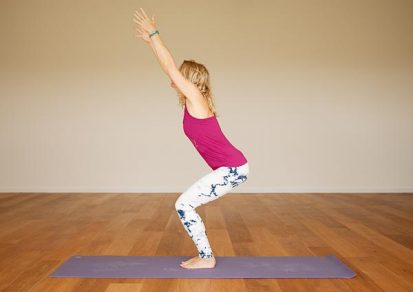As a yoga teacher, I believe it’s vitally important to keep questioning yourself about the instructions and alignment cues you use to teach your students and to reflect on whether they are still functional.
How to question your alignment cues
You can do this by asking yourself how you came to use certain instructions? Are you repeating what your teacher or someone you admire says? Are you saying something because everyone else does? Is that really a good enough reason? Did you ever test the instructions? Are you giving them because they work well in your body, and even if that’s the case, can you be sure it’s the same for someone else’s body?
Regularly be critical with yourself to check that what you say is still up to date, that it still makes sense, and that you are not just mechanically throwing out asana cues.
Regularly be critical with yourself to check that what you say is still up to date, that it still makes sense, and that you are not just mechanically throwing out asana cues.
Things change. New research and experiences come to the surface. The yoga community does not agree on everything. So it helps to stay informed by reading up on different research and opinions. This might help to understand your own choices. Next, you can update or change some of the instructions/cues you use.
This is what has inspired me to put together the Revolutionise Your Yoga program with Julie and Gilda. And also the Functional Yoga Program with Anat and Marcel
Remember, we teach yoga to help people, and we need to keep them safe. We need to stay critical and keep learning. Most of all we need to give ourselves the permission to change our minds and dare to say: “I used to say that, but now I’ve learned that, actually, that might not have been the most helpful instruction”.
Sharing our findings
Be loving though, in this quest, to yourself and to others who might still say things in a way that you may now view differently. It’s not about right or wrong, it’s a journey that we are all making so let’s remember some yogic values while trying to figure out what works best for us and our students. Let’s help each other by sharing our findings as teachers, not by judging, blaming and shaming. We are all doing the best we can, we are all in it to help people experience the benefits of yoga; we are all in it because we love yoga and what it does for our bodies, minds and spirits.
Let’s explore some of the cues I used to say that I have changed my mind about:
1. “Soften your buttocks” Or “relax your glutes”
This is an instruction I used to use in backbends – for example, Setu Bandha Sarvangasana Bridge pose – believing it was better not to externally rotate the thigh bone and thereby squash the lower back. Now I understand the buttocks are an integral part of a chain of muscles and they need to be used – but wisely! You can keep the neutral or internal rotation through engaging your inner thighs and then use the buttock muscles – an important set of muscles to keep us stable – to lift off. If you followed my programme Get Fit and Healthy 2 you will have heard me teaching Bridge and Wheel pose in this way.
2. “Pull your shoulders down”
I agree that some students (often beginners, unaware of their tension in that area) need a reminder to release their shoulders downwards in poses like Warrior I or Utkatasana / Chair pose. However, these days, especially in the more experienced yogis, I’ve noticed shoulders pulled down quite aggressively, which can pull on the trapezius muscles and cause pain. When the arms lift, for example, the shoulders naturally lift too – and so they should. Therefore, a more helpful instruction could be to keep the base of your neck soft.
3. “Tuck your tailbone”
This is an instruction often given to help lengthen the lower back when students show an excessive curvature of the spine (hollow back). However, my pelvis is already tucked naturally under (more of a flat back) so for people like me this instruction is counterproductive and exacerbates it even more.
So nowadays for poses like Tadasana / Mountain pose (and many more) I veer away from the words ‘tuck’ and ‘scoop’ and instead suggest to “lengthen your tailbone”. Better still, I like to focus on the abdominals – “draw your hip bones towards each other and draw your lower belly slightly up”. This gives core stability and also lengthens the lower back. It may even lengthen the tail, but not in the same amount it would if you moved from the tail.
4. “Square your hips” in standing poses

This instruction is commonly used in Virabhadrasana 1 / Warrior I or Parsvottanasana / Pyramid pose. Well, first of all, there is a front and a back leg – i.e. two legs doing something different, so your hips can’t possibly be fully squared. And why should they? To make it look better? Please no! Better to keep it functional.
In Warrior I, when you ground through the back leg and forcefully pull the back hip to face the front you may possibly torque your knee or destabilize the lumbar region of the back (lower back/sacrum). Even turning the belly forward can be a bit aggressive since you may pull too much on the sacrum area but this is for people to feel. I usually say instead, “turn your upper body to face forward”. When instructions are given that some people may overdo and get hurt as a result, I try to remind them that it should feel good in the lower back (the region that is at risk).
5. “Square your hips” in twists

I’m not even sure why I used this instruction in the first place! Probably because I heard it from one of my teachers, who heard it from one of his teachers…!
Anyway I found out the hard way: I always experienced pain in my sacroiliac (SI) joint after keeping my hips fixed in a twist, so I started to do some research and opened my mind around that instruction. Now I’ll never say it again.
Even though this cue might still be okay for the ‘easy twisters’, it can be detrimental for those with unstable SI joints, or may even make it unstable. Why? Because when one side of the upper sacrum shifts too far forward of the ilium, and out of the joint on that side, you exaggerate the risk of a dislodged SI joint. In twists, I now say something like, “allow your hips to move along naturally and make sure it feels stable in the sacrum/lower back area”.
6. “Bring your big toes together and separate your heels slightly”
This was a cue I used when instructing Tadasana / Mountain pose. Since realising that our inward ‘appearance’ (our bone structure) can be just as different as our outward appearance, I don’t say this anymore. What is neutral for one person (feet parallel) may feel very internally rotated, and indeed uncomfortable, for another person. It’s all dependant on the angle that their thigh bone comes out of their hip socket. Some people need to have their toes turned out a bit like Charlie Chaplin, and that is their neutral position, whereas others, whose femur bones are more internally rotated, are quite comfortable with their feet parallel.
So be careful with putting too much emphasis on that alignment instruction. I now say “keep your feet more or less parallel”. Make sure it feels stable so that you can allow the weight of the body to consciously move down through the feet into the earth.
7. “Imagine you are between two panes of glass”
Many of you will have heard this instruction in Trikonasana / Triangle pose – perhaps you’ve even used it yourself? I’ve not said this for a long long time, simply because it never felt good in my body. I believe there are only a few bodies that can safely deal with that instruction. It’s forceful on the sacrum and SI joint. If your right leg is forward in Triangle pose, I would say instead, “let your left hip come around to the front, and turn the chest up to the ceiling”. This way you keep space in the sacrum and it stays more naturally aligned.
Function over form
It’s worth bearing in mind that a lot of yoga instructions are very personal, and that is why you as a teacher you should not be too forceful with trying to get your student to comply with them. Also, some of them have more to do with aesthetics than with the functionality of the pose – i.e. that what a pose looks like is more important than what it feels like. In my opinion, this is plain wrong! What matters is that it’s functionally right and that it feels good! What it looks like is of no importance at all. We are talking about your body here – something you need for the rest of your life!
What a yoga pose looks like is of no importance at all. We are talking about your body here – something you need for the rest of your life!
Your body is not there to serve the pose! On the contrary, it’s the other way around! A yoga pose is there to serve your body, in all its glorious uniqueness.
I hope this article will encourage you to reflect on the things you say as a teacher. I’d love you to share your own experiences and instructions you don’t say any more (and why). Because I’m sure there are many, many more out there…!
Love,
Esther
Learn more about sequencing with Esther on the EkhartYoga Academy!
Join Esther for her 6-hour online course where you’ll learn how to create inspiring, well-rounded and safe yoga classes:
Related:
- Tension versus compression in yoga
- What is Functional yoga?
- Bone alignment – preventing yoga injuries
- Posture, alignment and recovering from injury


